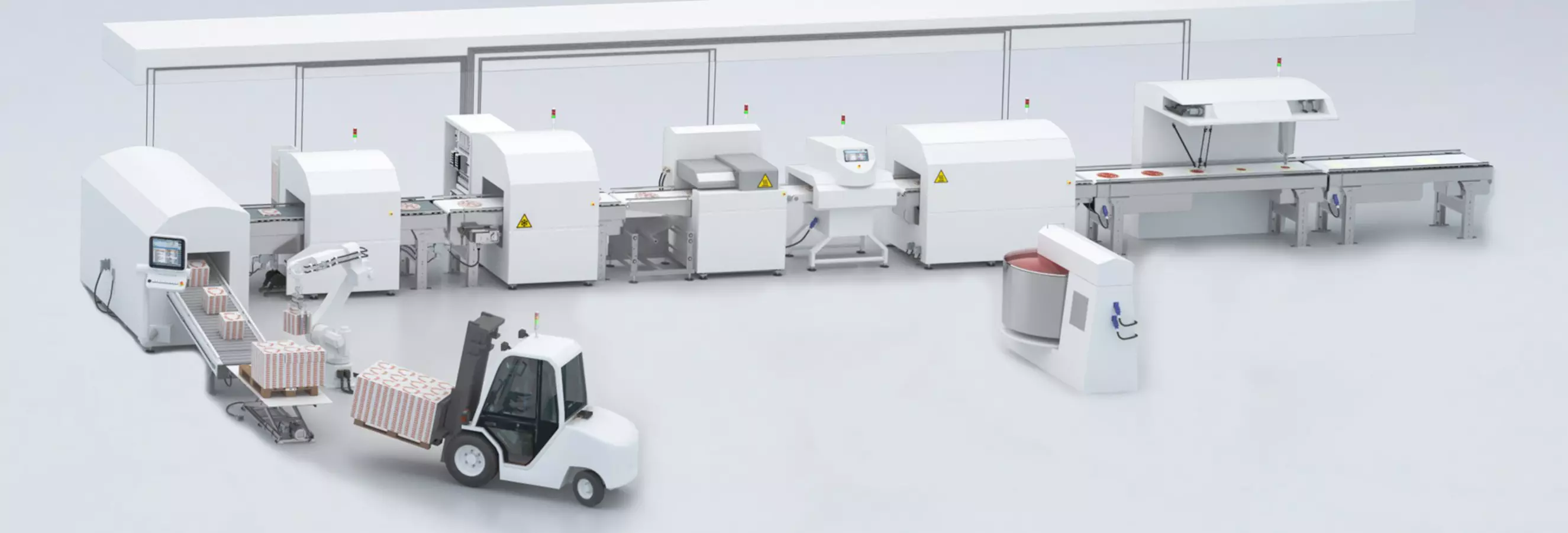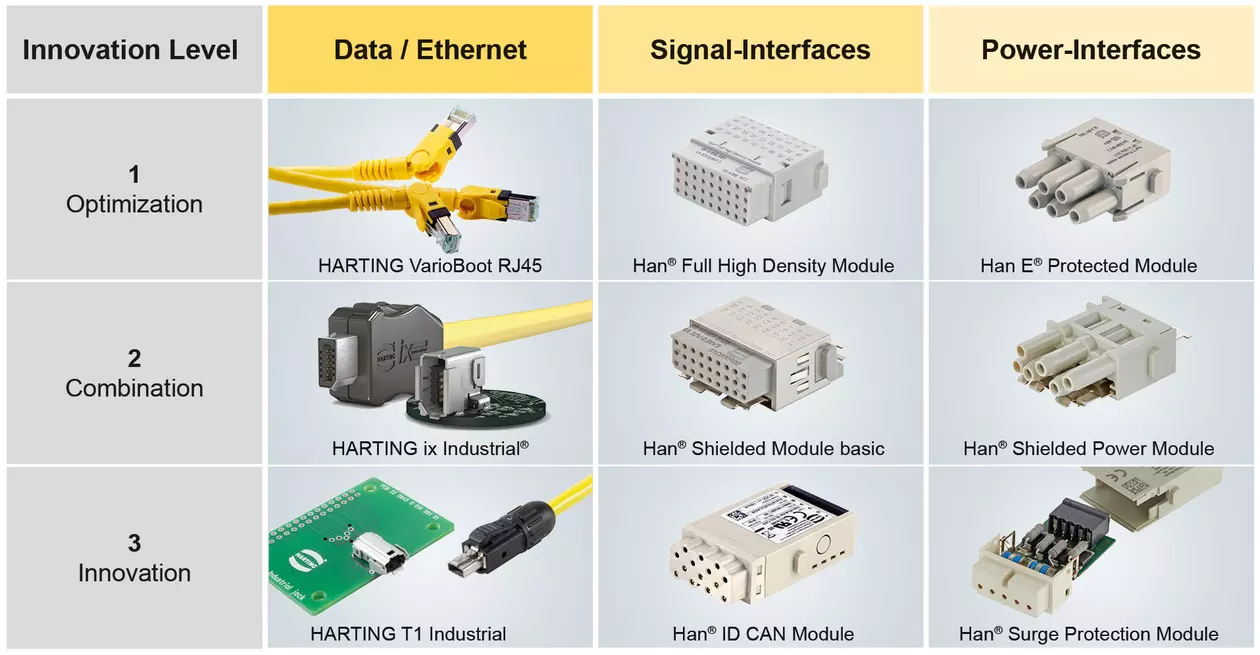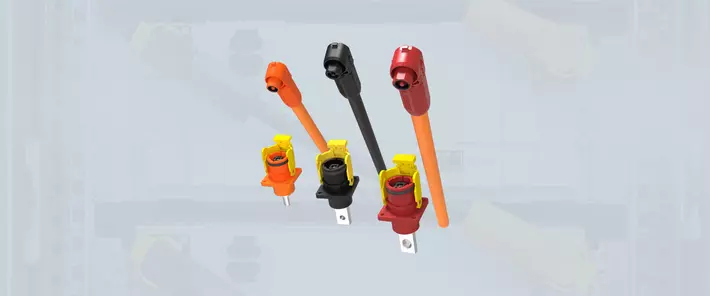In the case of motor spindles on machine tools, all the mechanical elements (axis, bearings, tool clamps, etc.) of the drive motor are designed in such a way that they can be integrated into the machine without further adaptation, while ensuring that additional elements can be integrated and withstand all loads in connection with the machine. At the same time, all the necessary elements of the electrical servo drive train – windings of the electric motor, encoders and sensors (position detection, temperature, vibration) – are directly adapted to the form factor of the overall unit.
Miniaturisation of production systems: Just how far can you scale down?

There are numerous examples of the progressive miniaturisation of technical systems. Moore’s Law”, for example, states that the integration density of microchips doubles every 18 months. Today, this means that around 35 billion transistors are packed into a single chip. The smartphone is another salient example. Over the past 20 years it has developed from a mobile phone into an integrated communication, navigation, entertainment and professional multifunctional device. The trend toward “condensing” functions and technical properties has already given birth to new technical disciplines: where the boundary between electronics and mechanics is becoming increasingly blurred, we now speak of mechatronics. The fact that the miniaturization of technical structures is a general trend, however, cannot only be observed in consumer goods. Take, for example, SpaceX’s Falcon Heavy launcher, currently the most powerful launcher in the world, is filigree compared to the historically most powerful “Saturn V” rocket im in the Apollo program. The SpaceX conserves energy and other resources – and is also partially reusable.
Does the current miniaturisation trend makes sense for production systems?
The argumentation goes that the trend could only have a limited impact on machines and plants anyway, because…
in contrast to typical microprocessor ICs or smartphones, these are installed and operated in an industrial environment;
they consume much less energy than spectacular systems such as carrier rockets
The objection loses its significance when we understand that miniaturization is not an end in itself but a “means to an end”. In the technical sense, any more economical and efficient solution is a “miniaturization” that requires fewer production, consumption or other materials and optimizes the use of energy, labour and other resources – as long as the required functionality is ensured and both the design of the machine modules and components and the sequences in the production process remain consistent.
Approach to miniaturisation
Consequently, the savings of material and energy resources is the actual goal that miniaturization is intended to achieve. In order to correctly and comprehensively assess the cost and benefits of miniaturization in production systems, it is necessary to consider both the viewpoint of OEMs in machine and plant construction and the viewpoint of end customers/operators. The Life Cycle Costs/Life Cycle Costs (LCC) analysis – developed by the German Engineering Federation (VDMA) – can serve as a guideline for a systemoriented approach. Moreover, the procedure can be very target-oriented according to the appropriate sections of the VDI 4800 BLATT 1 guideline (Measurement and Evaluation of Resource Efficiency / February 2016). The standards and methods of such an analysis and the derived measures are described here. The observation of particularly successful HARTING Kundencompanies reveals that such analyses must include a systematic listing of potentials. Ultimately, the implementation of the measures will deliver competitive advantages that will be developed over the course of the life cycle of a production system.
HARTING as a leading solution provider
HARTING is one of the world’s leading solution providers for all types of interfaces required in modern control, drive, HMI and communication technology for production systems. And the role of interfaces in the miniaturization process is not to be underestimated, as can be demonstrated very strikingly by the following example. When Intel developed its 8086 microprocessor at the end of the 1970s, the number of transistors reached a medium 5-digit range; a double-row 40-pin connection technology in a DIP package was absolutely sufficient for the requirements. Only 10 years later, the 80486 microprocessor of the same manufacturer with approx. 1 million transistors already required pin grid arrays (PGA) with several 100 pins to form the interfaces which ensured the full range of functions (incl. number of interfaces, EMC …) of the computer systems involved! In addition, the design of interfaces was of decisive importance for the success of certain microprocessor series or individual versions. As in IC technology, the packing density and the degree of integration of machine modules and aggregates in production technology is constantly increasing and, in line with these requirements, the interface solutions are also optimally designed. Based on experience gained through Erfahrungen und closer cooperation with customers from a very wide range of industrial sectors, HARTING can is able to make appropriate recommendations.
Innovation stages of miniaturisation
The following decisiven innovation stages – graded according to expenditure – can be derived from this:
Optimization through downsizing, simplification, minimization of material costs and the use of progressive new materials for existing components, modules and complete systems based on rising OEM core know-how and thanks to the use of increasingly precise CAE tools and methods.
Reduction in the size of components, aggregates and machine modules by combining two or more functional units that previously acted separately and thereby increasing the integration degree of these units.
Use of innovative technologies and/or combination of existing and new technologies for components, aggregates and modules – pursuing the aim of achieving significant material and cost savings or productivity gains that have not been possible up to now.
While downsizing and streamlining are part of the day-to-day business of mechanical engineering OEMs – and are therefore self-explanatory – the two more complex factors/levels require explanation and will be illustrated by way of examples.
The following examples serve to illustrate the innovative effects of combining previously separate functional units:
Recommendations for action on material savings and miniaturisation
Based on successful HARTING behaviour patterns of customers active in the field of mechanical engineering, general procedures can be derived, and steps can be recommended that are necessary for targeted material savings and the miniaturization of production systems. In general, it is advisable to evaluate the savings and miniaturization potential of individual machine modules or of the entire system using the standards and evaluation methods we have already mentioned (e.g. according to the life cycle time analyses of VDMA (1) or guideline VDI 4800 SHEET 1 (2)). The following procedure is recommended:
To consider the output system separately according to machine modules, units and functions and to prioritize them according to one of the recommended systems. The aim is to attach higher priority to those elements that represent the highest material or cost share of a system. In this way, the parts with the highest savings potential can be identified.
By way of an “expert analysis” pursuing the same goals as above, additional, less obvious optimization potentials inherent to the system are often discovered.;
Subsequently, the systems with the highest savings potentials are to be evaluated from a different point of view, namely according to…
Key functions that reflect the core competence of the OEM;
Basic functions (e.g. carrier – or transport systems), which extend across the entire system
Add-on or auxiliary functions that are more in line with the general state of the art and are of secondary significance for the OEM.
In the final step, the applicability of the three innovation stages described above in terms of miniaturization for all high-priority machine elements should be evaluated by experts.
The results of the evaluation should be presented in a matrix that is as abstract as possible. The advantage here is that a results matrix is created which evaluates feasibility, technical risks and potential savings. This enables an overview and provides sound technical and economic justification for the next concrete steps in miniaturisation and the resulting development process. The comparison of the built-up matrix with the results of regular interim evaluations allows efficient corrections and transparent presentation of the achievement of objectives during the development phase. In the course of targeted material optimisation and miniaturisation of parts of manufacturing systems, enormous savings potentials can be uncovered tapped. With just a few revision and reworking steps, the OEM can obtain more transparent machines that are optimised in terms of costs and requirements – and the end user generally realizes considerable savings in energy and resources.
Miniaturisation with support from HARTING
The HARTING Technology Group supports miniaturisation in mechanical and plant engineering by providing solutions for all interfaces essential in modern control, drive, HMI and communication technology for manufacturing systems. The decisive factor is that miniaturisation does not entail any functional restrictions. The same three levels of innovation can be traced in the products and solutions for industrial interfaces, which, depending on the level of miniaturisation and the integration degree, are expedient for the respective application.

Matrix for 3 innovation levels
In principle, there is no lower limit for miniaturisation, at least not one that would be attributable to the interfaces. After all, it is not the interfaces, but the functionality and size of the system that are the “guiding principle” in miniaturisation – also in manufacturing technology. As has been confirmed for many years in HARTING’s cooperation with its customers, the best results in “scaling down” in mechanical and plant engineering can be achieved precisely when the requirements of OEMs are combined with the practical experience of interface manufacturers for different branches of industry and applications. This results in innovative solutions that open up the course to flexible, technically and economically optimised solutions – and point the way to further horizons for future developments.
Reference:
1. Bode, F. Bünting, K. Geißdörfer, “Rechenbuch der Lebenszykluskosten”, VDMA publishing house, ISBN 978-3-8163-0617-7
2. VDI 4800 Part 1:2016-02,

Jakob Dueck
Position: Industry Segment Manager Machinery
- Department: Industry Segment Management
- Company: HARTING Technology Group


